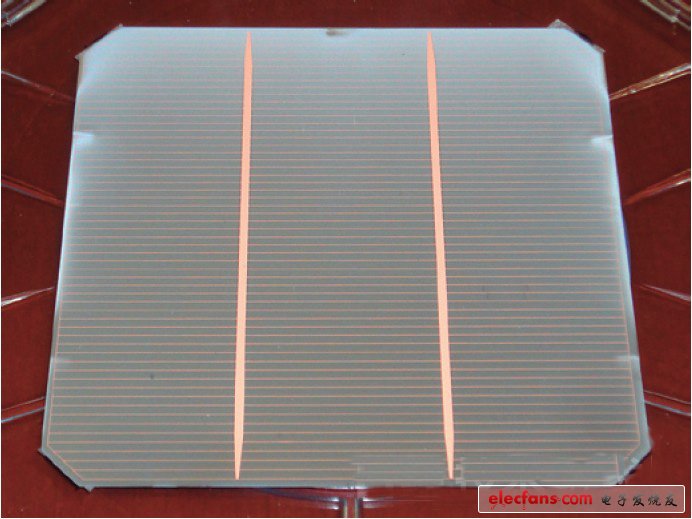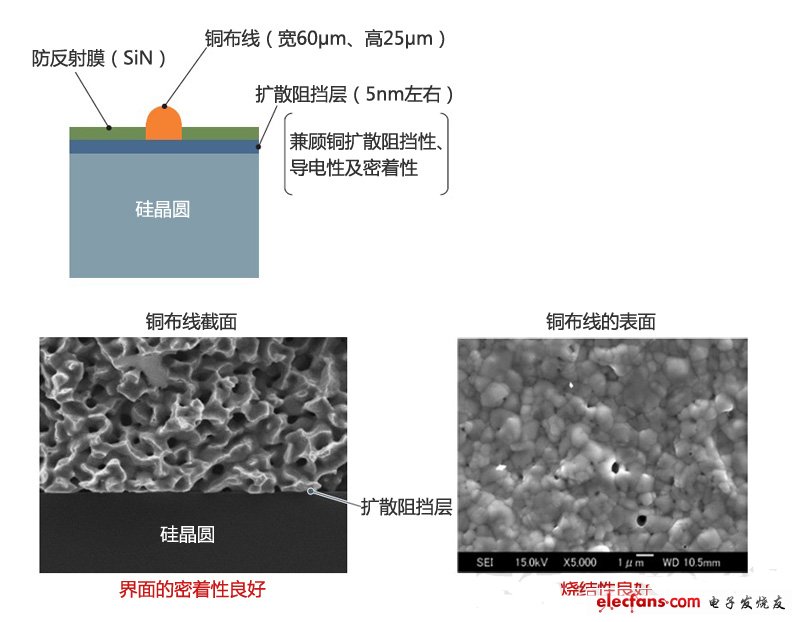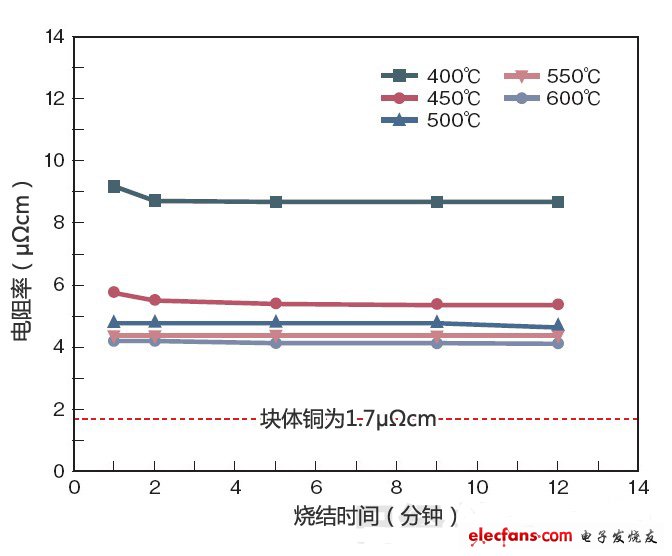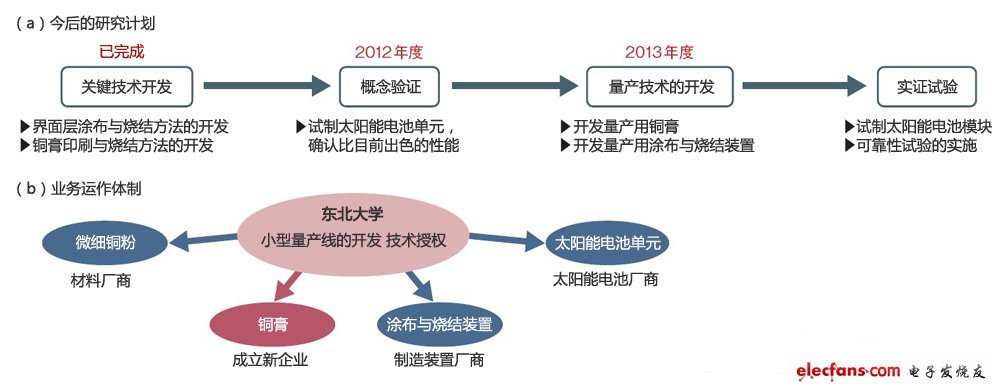"Creating a global industry in the Tohoku region of Japan." Junichi Koike, a professor at Tohoku University who developed new materials for solar cells, expressed with confidence. The technology developed by Koike can replace the standard silver wiring used as the light-receiving surface electrode of the solar cell with a cheaper copper wiring. Koike has developed copper-magnesium alloy materials used as semiconductor barrier metals in the past and has been adopted by semiconductor manufacturers. Koike's goal is to use this experience to establish a copper paste material manufacturing company and cultivate it into a world-class enterprise.

Copper wiring printed on silicon wafer
The silver paste used to form the silver wiring accounts for about 1/4 of the material cost of the solar cell. By replacing the silver paste with a cheaper copper paste, the material cost can be reduced by 20% instantly.
The data obtained by the research team shows that the wiring resistance value using copper paste is lower than that of silver paste. By combining this technology with the wiring width reduction technology, the battery conversion efficiency can also be improved. "Overseas research institutions think it can be increased by 3 to 4 percentage points" (Koike).
Therefore, replacing silver wiring with copper wiring has been the focus of global solar cell manufacturers. However, there are problems in this field that copper diffuses into silicon, resulting in poor solar cell performance, and copper oxidation during sintering, resulting in increased resistance. Tohoku University solved the above problems by (1) forming a diffusion barrier between the silicon wafer and the copper wiring to prevent copper diffusion, and (2) improving the sintering conditions of the copper paste to prevent oxidation.
Simultaneously implement oxidation and reduction
The diffusion barrier layer in (1) is composed of an oxide with a thickness of 5 to 10 nm. Not only can it prevent copper from diffusing, but it also has conductivity and high adhesion to copper paste (Figure 1). Because it is very thin, it has little effect on the transmittance of sunlight. The current diffusion barrier layer is formed by immersing a silicon wafer in a solution-like material and sintering it at a temperature of about 500 ° C.

Figure 1: Printing copper paste after applying a diffusion barrier
Tohoku University has developed copper paste materials for solar cells. After the diffusion barrier layer is coated on the silicon wafer, copper paste is printed to form wiring. (Photo provided by Northeastern University)
The sintering condition of copper paste in (2) is partially placed in reducing gas. The silver paste is sintered in the atmosphere, and the resin in the paste becomes volatile oxides, which can be easily removed. However, copper paste is placed in nitrogen to prevent oxidation, making it difficult to remove the resin. In order to remove the resin and increase the oxygen concentration, the copper surface will oxidize. Although the relevant process details were not disclosed, it is said that a process for simultaneously performing oxidation and reduction in the sintering furnace was developed.
After sintering at 500 ° C. for 1 minute, the copper wiring resistivity becomes about 5 μΩcm which is equal to or smaller than that of Ag wiring. Even if the sintering time is extended, the resistivity will not increase, so sintering can be carried out while preventing copper oxidation sufficiently (Figure 2). It is also confirmed that the resistivity can be reduced to about 3μΩcm if the sintering gas is adjusted.

Figure 2: Sintering conditions are 1 minute at 500 ℃
After printing copper paste, if sintered at a temperature above 500 ℃, the resistivity will decrease. If the sintering time is extended to more than 1 minute, the resistivity will not change greatly. (Photo provided by Northeastern University)
New companies also have opportunities
At present, the development of key technologies has been completed, and the characteristics of solar cells have been confirmed in 2012. It is planned to complete the development of mass production technologies in 2013 (Figure 3). During this period, a copper paste material manufacturing company will be established, and at the same time, technical authorization will be implemented to material manufacturers, manufacturing equipment manufacturers and solar cell manufacturers to promote practicality Note 1)

Figure 3: The goal is to achieve business operations as soon as possible
The development of key technologies and proof of concept are scheduled to be completed in 2012 (a). In the future, while developing mass production technology, it will provide technology licenses to various manufacturers to realize business operations as soon as possible (b). During this period, a new copper paste manufacturing enterprise will be established.
The reason why Koike firmly believes in being able to "bring copper paste material manufacturing companies into world-class enterprises" lies in the precedent that new materials have swept the market. In the past, companies have developed new silver paste materials that can increase the conversion efficiency of battery cells by 0.35 percentage points, and quickly increased their share. Therefore, the copper paste material can be increased by 3 to 4 percentage points, and even new companies can fully expand their share.
PCB Spring Terminal Block Section
PCB Spring Terminal Block
It is a new type of terminal block with spring device, which has been widely used in the world's electrical and electronic engineering industry: lighting, elevator lifting control, instruments, power supply, chemistry and automobile power, etc.
Spring type terminal block
Spring type PCB terminal, the connection mode is divided into cage spring connection and butterfly spring connection, which is fast and convenient for wiring and improves the operation efficiency.
It can be used to connect all types of conductors with cross-section of 0.2mm to 16mm, with spacing of 2.5mm-15.0mm.
PCB Spring Terminal Block
ShenZhen Antenk Electronics Co,Ltd , https://www.antenkelec.com
